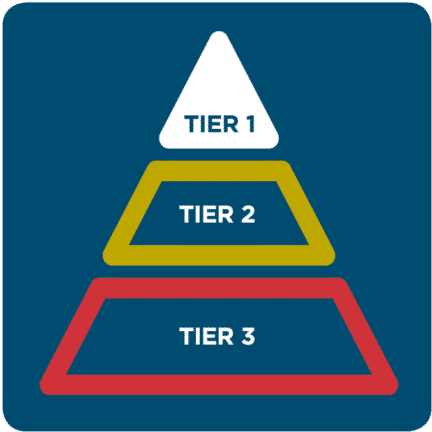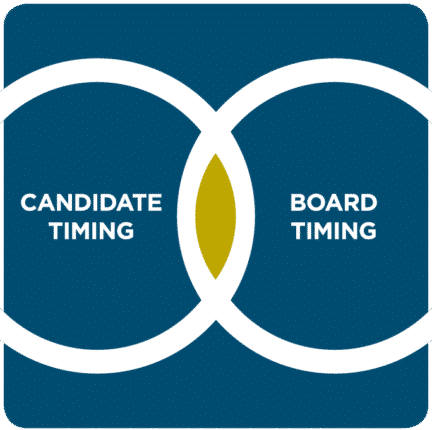When it comes to a healthy board, most of us know one when we see one.
However, it’s no big news to report most nonprofit boards feel they could be doing much better. And they are often keenly aware of the problems—be it anything from unclear expectations, a lack of diversity in thought and experience, inadequate skillsets, or an inability to adapt to change. Yet, too often attempts to right these issues are delayed, sometimes until long after new members have joined.
A healthy board, whether non-fiduciary or fiduciary, begins with great engagement, and there’s a better way of looking at board recruitment. Yet, most publications and training about improving boards focus on topics such as bylaws or running a productive meeting. Even when there is an understanding about who is on the board, there is little attention on how to recruit the right new members to round out expertise. It is time to shift our perspective, in part by adapting an executive search approach.
Consider the following strategies:
 STATIC VS. STRATEGIC
STATIC VS. STRATEGIC
Asking “What is the role of the board?” is not a bad question to start a board development review, but too often this type of static question doesn’t go far enough. Discussion of role without context or call to action simply falls short of creating a compelling recruitment case. Instead, consider questions, such as:
- Is your board perceived as a strategic asset? And if not, what is to be done?
- Is your board perceived as a board worth joining by potential candidates? If not, why not, and what is to be done?
By focusing on strategic questions, as opposed to static definitional queries, the board has an opportunity to enter a larger, more meaningful conversation about what the organization needs for continued success. The best approach to board recruitment is future-oriented, holistic, and strategic to ensure constant transformation of the nonprofit and board.
 ONE BOARD VS. MANY BOARDS
ONE BOARD VS. MANY BOARDS
It turns out that many board members draw primarily upon past (and often vastly different) board experiences when orienting to a new board environment. I have asked many members of fiduciary boards, “Where did you get your understanding of what an ideal board member should do?” The responses are fascinating. They describe pulling on non-fiduciary experience from advisory boards, leadership counsels, overseers, ad hoc committees, etc. It’s no wonder that expectations are often not aligned. In the absence of clearly articulated expectations, new board members may simply be invoking previous, unrelated, or even conflicting insights. On the other hand, this diversity in experience can be an asset when grounded in thoughtful and deliberate recruitment and followed by appropriate options for participation within the organization.
 “GOOD ENOUGH” VS. GREAT RECRUITS
“GOOD ENOUGH” VS. GREAT RECRUITS
It takes as much time and effort to recruit “second tier” board members as it does the “tier 1” leaders the board truly wants. Invest the time to identify, cultivate, and engage top prospects, and assume that everyone is available for consideration. Keep in mind that boards likely shouldn’t invite the first person they interview to serve, so having a large, strong pool is a must. A good rule of thumb is the board should be able to identify 6 people who are qualified and have indicated some interest for each open board seat. And remember, be choosy; often, more than 90% of recommendations are “good enough” but not top tier.
 AD HOC VS. 24/7 RECRUITMENT
AD HOC VS. 24/7 RECRUITMENT
Just like a major gift officer who meets a prospect for the first time isn’t expected to ask for the ultimate gift, the identification and solicitation cycle of a new board member may take up to 18 months. For that reason, it’s wise to abide by the saying, “Recruit when you don’t have to.” Everyone involved in the nonprofit is an ambassador, and there is no limit to how large the nonprofit’s network can grow. Additionally, keep in mind that branding falls under the umbrella of recruitment, so a strong and consistent online presence can contribute to recruitment efforts, as well. In this sense, first impressions play a crucial role in recruitment. By recruiting constantly, as opposed to only when needed, a robust candidate pipeline will be readily available and primed for the position when the time comes.
 DISJOINTED VS. SYNCHRONIZED CYCLES
DISJOINTED VS. SYNCHRONIZED CYCLES
A successful recruitment process remains mindful of the cycles of both the nonprofit and candidate. A candidate’s personal and professional cycle will dictate their ability to take on a board role now or further down the line and whether they may be of more use in a different leadership role. For instance, a “not ready yet” fiduciary board member candidate can join a feeder advisory committee until the time is right for them to step up. Relatedly, leadership transitions and the undertaking of new fundraising campaigns are both ideal times to recruit as new opportunities let the board test possible candidates’ participation and commitment. By synchronizing these cycles, the board maximizes the candidate’s and the organization’s potential for growth.
 OLD NETWORKS VS. NEW NETWORKS
OLD NETWORKS VS. NEW NETWORKS
Most boards begin by recruiting the “usual suspects”—people they know, or people who are just one step removed from their immediate networks. This is a natural tendency because of the comfort level and relative ease of doing so. However, by recruiting candidates who are “new” and perhaps less familiar with the nonprofit, a board can allow for greater growth. Of course, creating new networks can be a risk because of the lack of familiarity and trust, but it does open the door for innovation and change.
Looking Forward
Naturally, each board recruitment is unique due to a myriad of factors. The organizing body for recruitment can come in a variety of forms, and the role of staff and consultant varies based on current leadership, the moment in time, previous recruiting habits, and more. Additionally, higher education, hospitals, and religious organizations have built-in constituencies from which to recruit, as opposed to, let’s say, advocacy, public health, and other “non-constituency” nonprofit organizations. Nevertheless, the above guidelines remain relevant and crucial in assuring that recruitment is no longer the overlooked lifeblood of board health.
Board recruitment is an evolving area of inquiry, and in some ways, we have only just scratched the surface. Your questions and comments are welcome; please reach out to us at editors@developmentguild.com.




